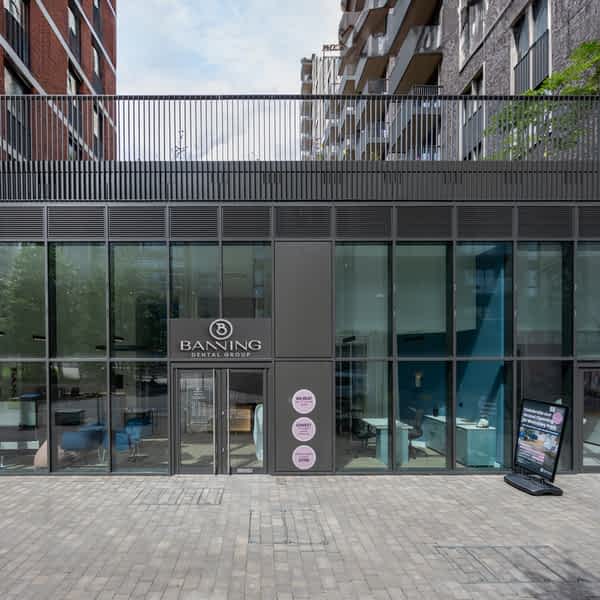
Are metal braces still relevant in modern day orthodontistry?
Since the prolific rise in popularity of clear, discreet teeth straightening methods, you may be surprised to learn that metal braces still serve an important role in orthodontic treatments. Whilst metal braces might be considered as the prehistoric mode of correcting crooked teeth, they are in fact far from extinct.
It might seem like everyone wants Invisalign these days. These new ‘invisible’ methods of teeth straightening have become increasingly popular, especially amongst adult patients but in some cases the costs are prohibitive. In other cases of more complex treatment plans the best tools for the job are still those that have served us well for decades.
So, which is better? The good old traditional yet unsightly metal braces, or today’s more flattering clear alternatives? Understandably, there is some uncertainty around which teeth straightening method to opt for and which is the better route to take, so let’s consider the merits of metal braces to establish whether they are now a thing of the past.
How do metal braces work?
Metal braces are designed to straighten teeth, resolve overcrowding, correct bite problems, close gaps and fix awkward rotations. In fact, their scope as a treatment method is far-reaching and effective even in complex cases.
Once your orthodontist has a full record of scans and x-rays, they will have a good understanding of the approach to treating your case. You will most likely start with a hygiene clean so that the braces are fitted to the cleanest possible surface. The metal brackets will be glued individually to the centre of each tooth and hardened in place using a blue light. In some cases, you may need elastic bands to anchor onto your back teeth to provide the correct level of force for realignment.
Once the brackets and bands are in place, a central wire (called the archwire) is attached to connect each of the brackets. The wire will be snipped at each side to avoid any discomfort to the cheeks and gums and once firmly in place, the correct amount of force can be applied by tightening the wire. Following the initial fitting, periodic visits to your orthodontist will be required, not only to check the progress of alignment but also to tighten the wire as the treatment progresses.
Are metal braces better than invisible retainers?
As with all dental treatments, there are pros and cons of each option and there is no ‘one-size-fits-all’ approach. The final decision is likely to be based on which will be the most effective and give the best result rather than which you may prefer.
It is important to understand that Invisalign is usually a better option for mild to moderate corrections and enhancing the overall cosmetic imperfections of the teeth. If the movement and alignment require a greater degree of force and control in correcting more problematic bite issues, the chances are metal braces are likely to be the most suitable approach.
There is no denying that there are some perks that come with using Invisalign. As the name suggests, the clear aligners are close to invisible so aesthetically they are more desirable. The fact that they are removable is also seen as an advantage for eating and cleaning with ease. However, this also has its drawbacks. If aligners are removed and left out too frequently the results are going to be slow and disappointing. It requires a great deal of discipline to maintain the 22 hours a day wear time, something that is never a problem with metal braces.
Only your orthodontists can advise you for sure of the most suitable treatment plan for your own case, but you will find that metal braces are more capable of handling more complex corrections and are guaranteed to result in a perfect looking set of teeth.
Are metal braces cheaper than Invisalign?
Metal braces are generally more cost-effective than other methods of teeth straightening such as Invisalign, but again it will depend on the specific case. They are also more versatile and simpler to tweak as the layout of your teeth evolves. Due to the precision that can be achieved with these small periodic tweaks, in more complex cases, they are the preferred option. Thanks to their more affordable price tag, they have not lost their place as an effective and long-lasting teeth alignment treatment.
Can metal braces be clear?
There are more natural colour options available to tone down the harsh perspective of solid metal ‘train-track’ blocks. The use of clear or ceramic brackets and clear wires are certainly easier to embrace visually than a full mouth of metal. There are also possibilities to colour match brackets to the teeth. There are plenty of options to explore but deviating from the traditional metal structures may command a slightly higher price point as the materials cost more to produce.
So, are metal braces a thing of the past?
In general, metal braces are the preferred choice for more intricate cases even today. Sometimes the physics of dental corrections require an extra or focused level of force that Invisalign cannot offer effectively. If you have an overbite, an underbite, or significantly misaligned teeth, traditional braces will probably be your best bet to deal with the issue effectively and quickly. They can also be easily tweaked to re-fit the changing landscape of your mouth as your teeth slowly move into their new positions.
Unlike videotapes, fax machines and walkmans, metal braces are still highly relevant in today’s society. The world of orthodontistry still very much relies on metal braces for certain scenarios and so they will remain a valid option for quite some years to come.
If you’re not sure whether your specific case needs metal braces or another treatment, we can guide you to make the right decision that is best suited for you. Take your first step to a confident smile by getting in touch with us to schedule your consultation.









